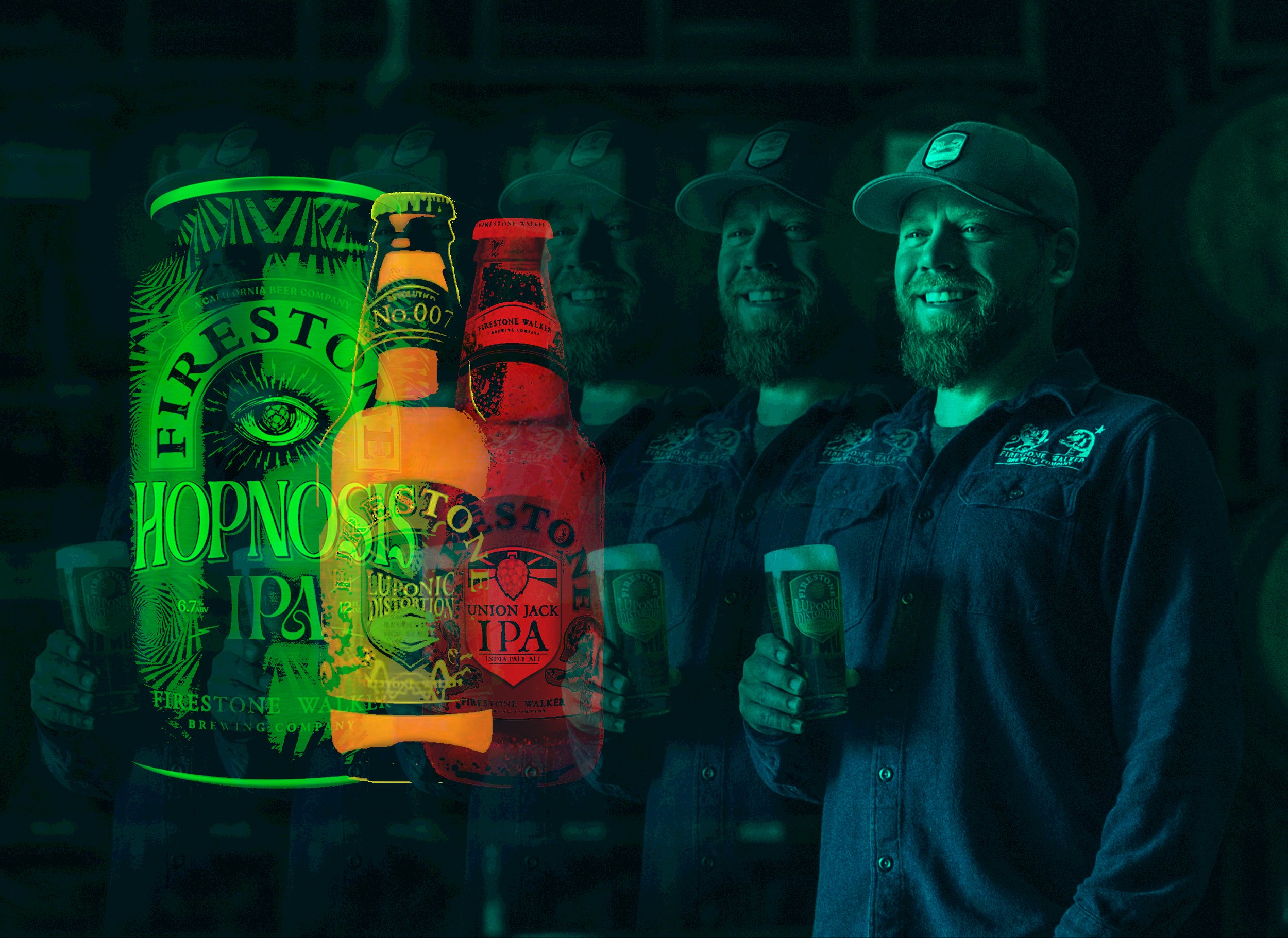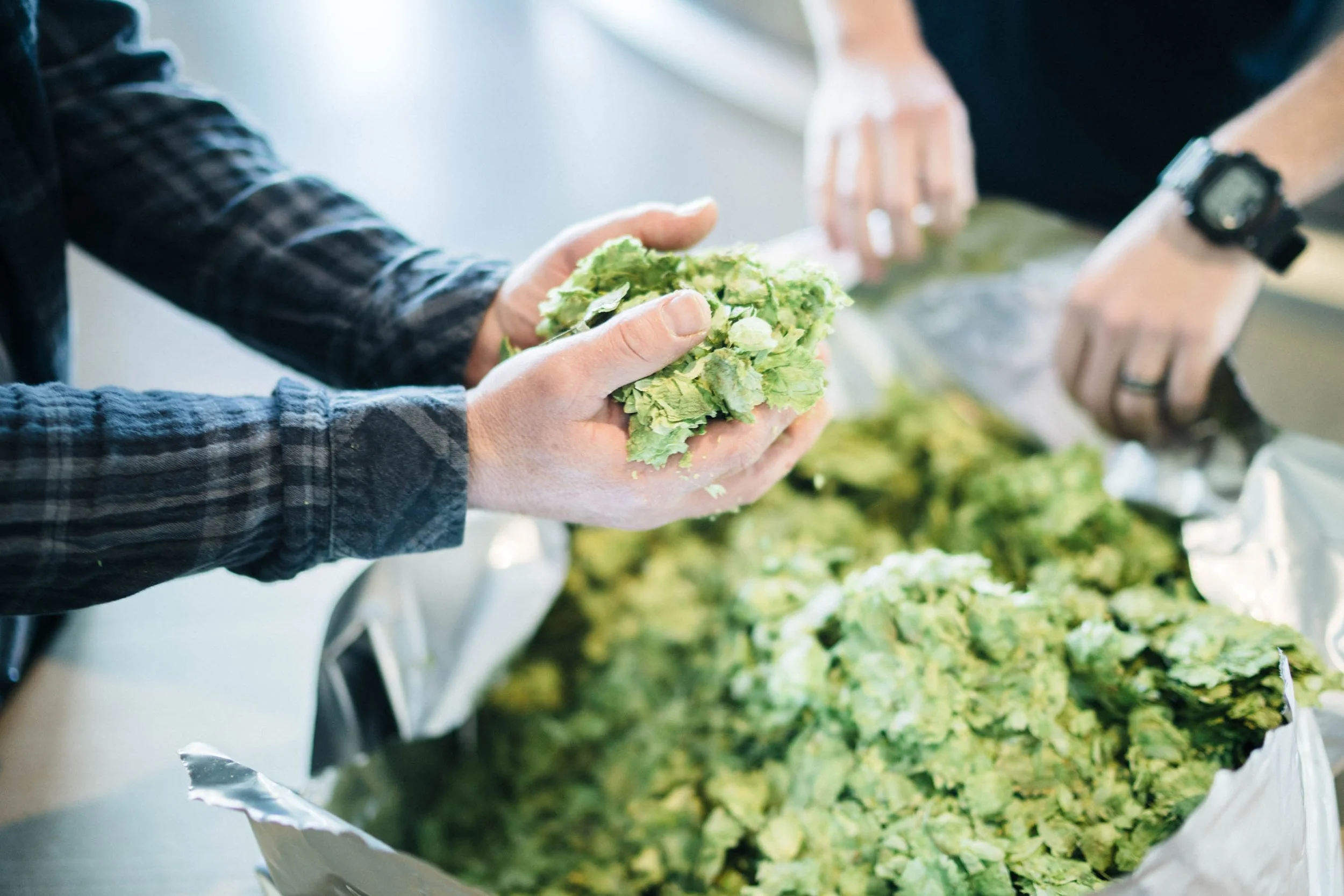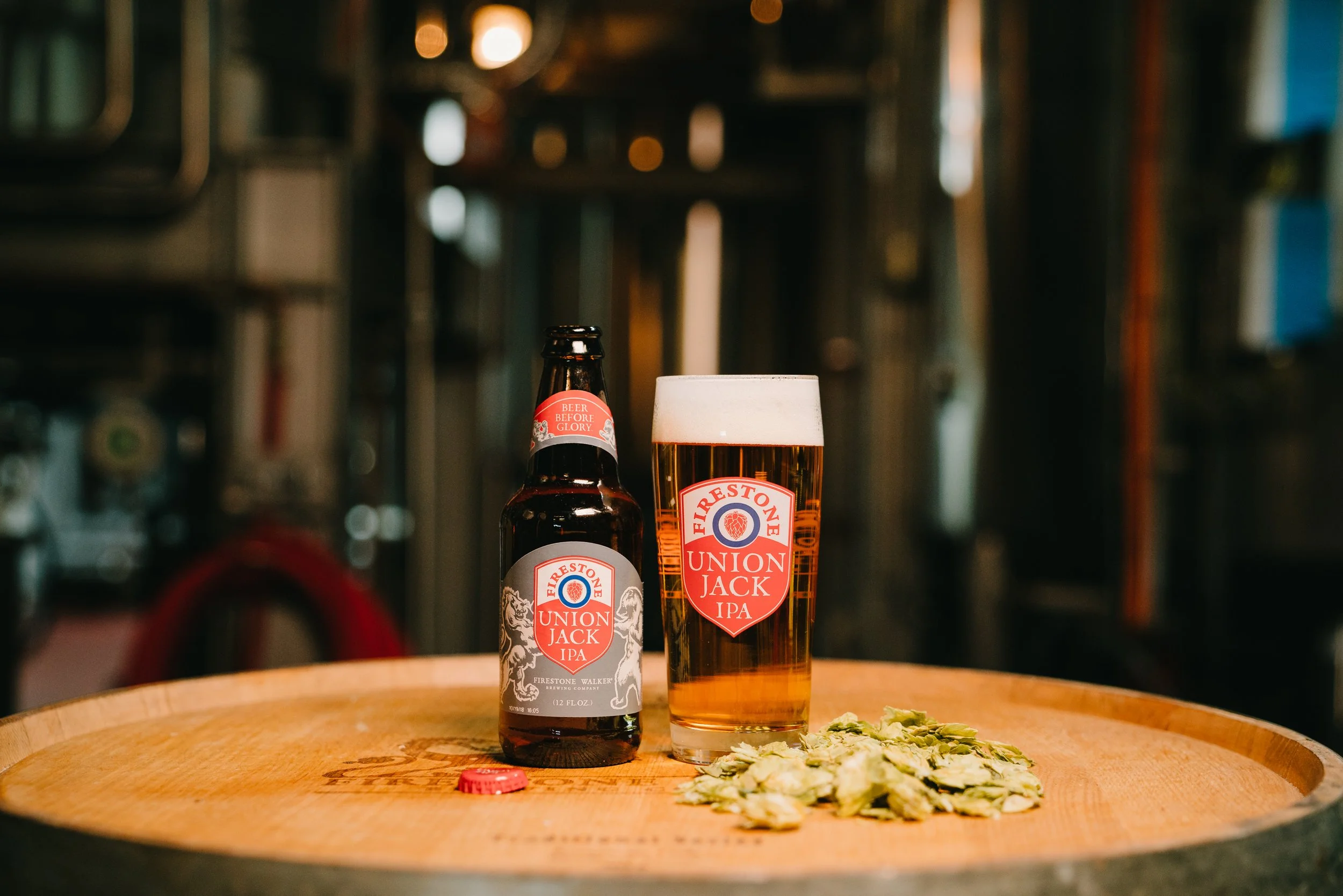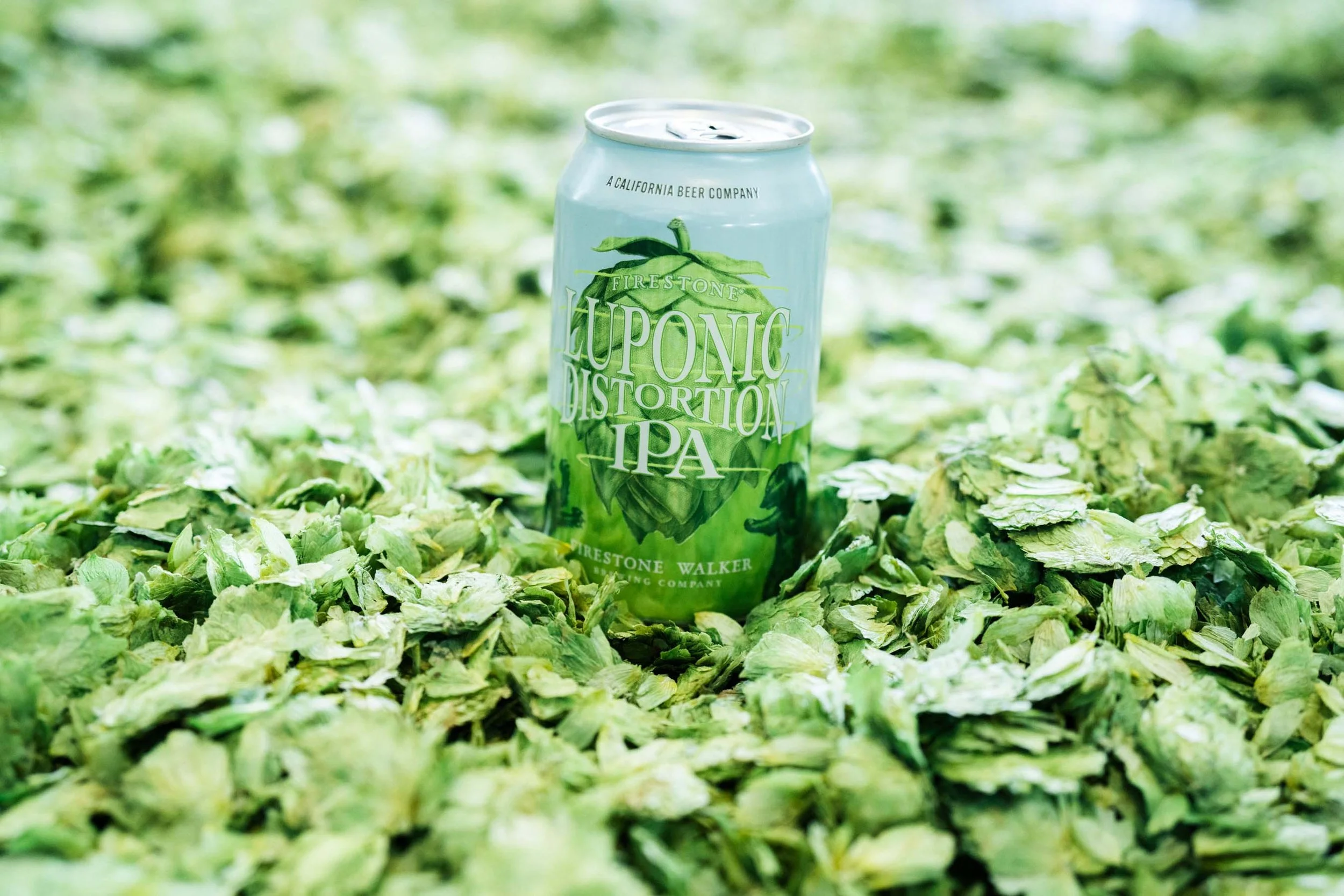Merlin, Method, and the Magic of Hops: Firestone Walker’s Matt Brynildson and his Evolving Thinking About IPA
It all started with a vineyard, a second hand brewhouse, and an anachronistic British pale ale. Yet Double Barrel Ale, or DBA as it's now known, succeeded against the odds, helping to put a then small California brewery on the map in 1996. Firestone Walker didn't stay small for long, and five years after DBA first appeared, founders Adam Firestone and David Walker hired a talented young brewer who would steer them in a decidedly American direction and lead the company to greater heights. Lighting the way was a tried and true ingredient with some seriously new star power: hops.
In hindsight, it's not completely surprising that Firestone Walker ended up with a lineup that leans heavily into hop forward beers. After all, Matt Brynildson, the midwestern brewer who joined the company in 2001, began his post collegiate career as a hop chemist. Coursework at Chicago’s Siebel Institute and an opening at Goose Island convinced him to pursue brewing however, where he has put his knowledge of Humulus lupulus to good use. As Brynildson explains, it was the Centennial variety in particular that piqued his interest when he took his first beer industry job.
"I have a feeling [Sierra Nevada's] Ken Grossman was using Centennial before any of us, and I've always sort of held [Celebration] in my mind as sort of a foundational IPA," he says, adding that he was one of the lucky few who tasted the first batch of Bells Two Hearted Ale, famously hopped entirely with Centennial. "When I got to Goose Island, I knew I wanted to use Centennial hops."
Those Centennial hops ended up in Goose Island IPA along with UK Fuggle, putting an American twist on a beer with English roots. The hop bill has changed over time, but Centennial remains key to the recipe, earning the first of its six Great American Beer Fest medals in 2000. As Brynildson recalls, he knew what flavor attributes he was aiming for, a big part of the challenge was figuring out how to get the hops into beer at the right time, especially when working with 200 barrel fermentation tanks. He prevailed in his pursuit of hoppiness, and after Goose Island, moved to California where he briefly worked at SLO Brewing in Paso Robles before Firestone Walker acquired the company’s production facility and Brynildson along with it.
He took to his new job with aplomb, helping Firestone Walker scale up the production of DBA, overseeing its move to bottles after years as a draft-only brewery, and then developing its first American-style, West Coast IPA, Union Jack.
“I wanted to integrate more hop character,” says Brynildson, who eventually earned the nickname Merlin for his wizardry in the brewhousee. “Already in those days people were talking about the biotransformation of hop compounds. So for Union Jack, we went to school on everyone’s beers: Stone, Russian River, Sierra Nevada.”
To create an IPA with a lean body, an assertive bitterness, and intense citrus and pine character, he went back to his hop playbook for an old favorite. Using Centennial, Cascade, and CTZ in the kettle, Brynildson then added Cascade, Centennial, Chinook, as well as three newer varieties—Amarillo, Simcoe, and Citra—on the cold side. And in an effort to pull out more aromatics from the hops, he changed his approach, increasing his dry hop rate to 2 pounds per barrel, and dry hopping both during and after fermentation. Union Jack quickly became one of the company’s best-selling beers, went on to win back to back gold medals at the Great American Beer Festival, and remains in the lineup as "a fad-proof IPA" to this day.
“At Goose Island, Greg [Hall] was always a fan of whirlpool hopping, and that’s always been a piece of our hoppy beer program,” Brynildson says. “It does make a fairly significant amount of hop oil survive that process. Over time I’ve taken some of those hops out and added them to the dry hop though.”
The success of Union Jack, along with Brynildson’s dedication to consistency and his commitment to improving methodology—not to mention his passion for hops—led to a number of other popular releases, including Double Jack Double IPA, Wookey Jack Black IPA, and Easy Jack Session IPA. With each beer, Brynildson and his team built on knowledge they had gained developing other hop-forward styles. The session IPA for example, applied higher dry hopping rates to a pale ale recipe and also incorporated Hüll Melon, Mandarina Bavaria, and Nelson Sauvin, three varieties the accomplished brewmaster had fallen for in the years since Union Jack’s debut in 2006.
“Easy Jack came before Double Jack, and was born before we really cared what anybody wanted,” Brynildson says with a laugh, noting that the 4% ABV beer was dry hopped at two pounds per barrel. "Now it's a poundage war—for the IPA lover it’s all about more. But you reach the point of saturation at 3 or 4 pounds. You're sacrificing balance and drinkability."
In 2016, Firestone Walker ventured further into the ever-changing realm of IPAs, launching the Luponic Distortion series with a revolving recipe. In essence, a malt bill of 2-row, Carapils, and wheat serves as a canvas for different hop blends designed to highlight emerging and experimental varieties. For example, the current iteration features Talus as well as El Dorado, Comet, Cashmere, Blanc, and Vic Secret. By introducing Luponic Distortion, the brewery, and its brewmaster, had landed on a way to trial hop combinations on a commercial scale, while also meeting the consumer demand for new beer on a regular basis.
“We’ve done 19 revolutions over the course of five years,” Brynildson says. “It’s the same base beer, but we change the dry hops every quarter. Initially we wouldn’t disclose the hops we were using. We thought it would be fun if there was a little bit of secrecy.”
Meanwhile, even as Luponic Distortion was steadily winning over drinkers, yet another style arrived that would soon dominate draft lines from coast to coast: hazy IPA. Somewhat late to the game, Brynildson ultimately found inspiration in Germany’s brewing traditions, and ended up with Mind Haze IPA after experimenting with ideas and techniques at Firestone Walker’s R&D brewhouse for a full year. Of note is the fact that it’s a popular hazy IPA that doesn’t include Citra, a kingmaker among hops. And not only did it become a big success for the brewery, it yet again gave Brynildson more building blocks for his next big release.
Earlier this Spring Firestone Walker debuted Hopnosis IPA, the latest example of its relentless pursuit of excellence and innovation in the realm of heavily hopped pale ales. Brewed with Mosaic cryo hop pellets, which concentrate the lupulin from whole leaf hops, Hopnosis delivers huge tropical fruit character along with notes of lychee and white grape. Starting with a base of 2-row, Carapils, Munich, and wheat malt, Brynildson reached for some of his favorite varieties at the dry hopping stage, going with Idaho 7, El Dorado, Cashmere, Nelson Sauvin, and Riwaka in addition to the cryo hops. Lighter in color and higher in bitterness than many of the other beers in the brewery's lineup, it's a West Coast IPA that benefits from lessons learned developing both Mind Haze and Luponic Distortion. And in a way, it harkens back to Union Jack, too.
“I honestly think West Coast IPAs will and should have another chapter,” he says confidently. “West Coast IPA isn’t going away.”







